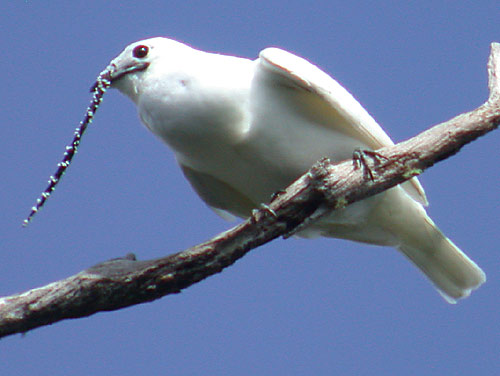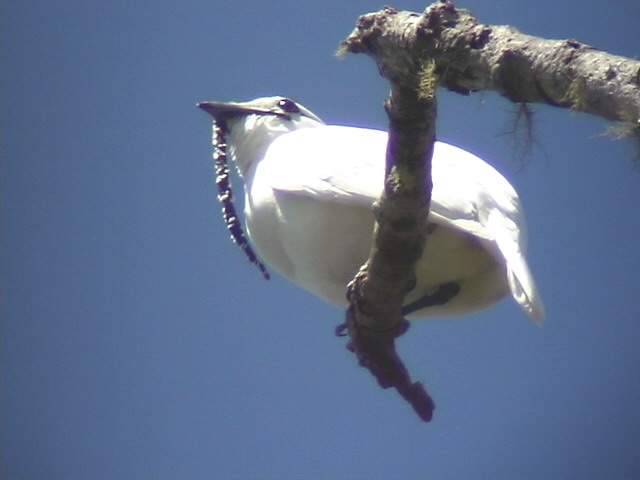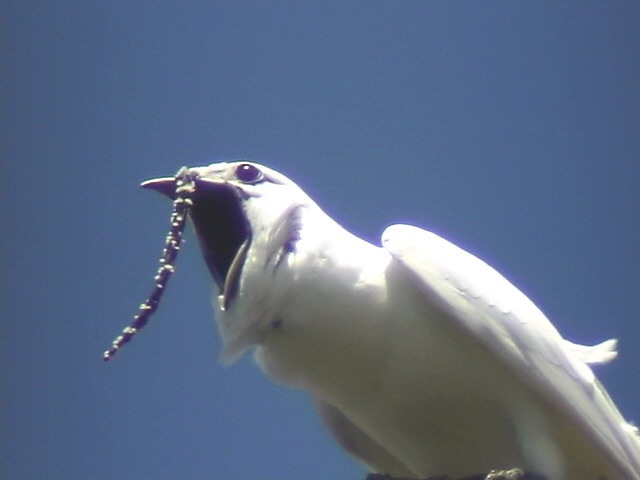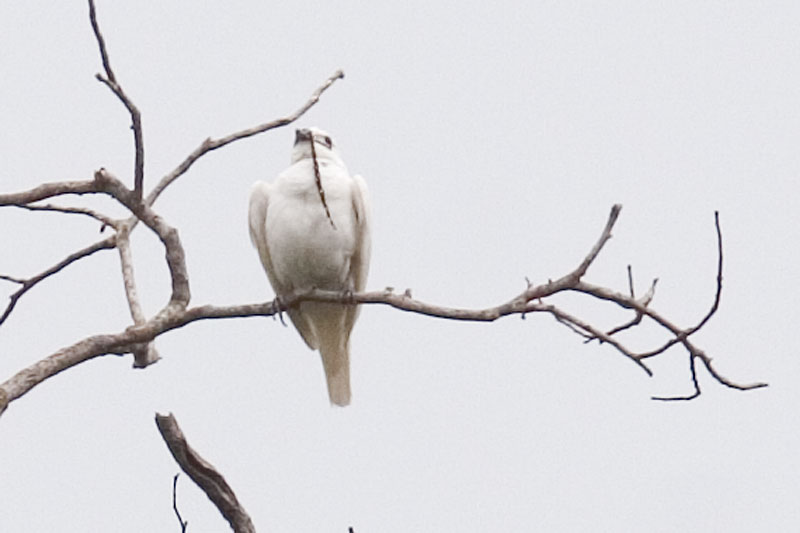
Procnias alba
TAXONOMY
Procnias alba Hermann, 1783.
OTHER COMMON NAMES
French: Araponga blanc; German: Zapfenglцckner; Spanish:
Campanero Blanco.
PHYSICAL CHARACTERISTICS
The bellbirds are distinguished by compact bodies, flat beaks,
short tarsi and a plumage of small feathers. Males have among
the loudest calls of any birds. They are completely white, with
a long inflatable, “horn-like” wattle on the head; the “horn” is
covered with small white feathers which can be erected during
display. Females, which are silent, are predominantly green and
somewhat smaller.
DISTRIBUTION
This species is found in the Guiana Shield, ranging from 1,500
to 4,900 ft (450–1,500 m). It may be a local altitudinal migrant.
HABITAT
Bellbirds live in tropical lowland or montane evergreen rainforest.
BEHAVIOR
They prefer high perches in the canopy, often on bare tree
branches, which project above the crowns of surrounding trees.
The calls sound as if an anvil were being struck with a hammer.
FEEDING ECOLOGY AND DIET
These birds feed on fruit. The short bills with a wide gape are
adaptations for gorging on quantities of fruit.
REPRODUCTIVE BIOLOGY
The nest is of sparse construction and is built on open
branches. One or two eggs are laid per clutch. Female bellbirds
care for the young alone, regurgitating fruit and cleaning the
nest of fecal sacks and regurgitated seeds.
CONSERVATION STATUS
Not threatened.
SIGNIFICANCE TO HUMANS
None known.
Photo Gallery of - White bellbird




 Animalia Life
Animalia Life